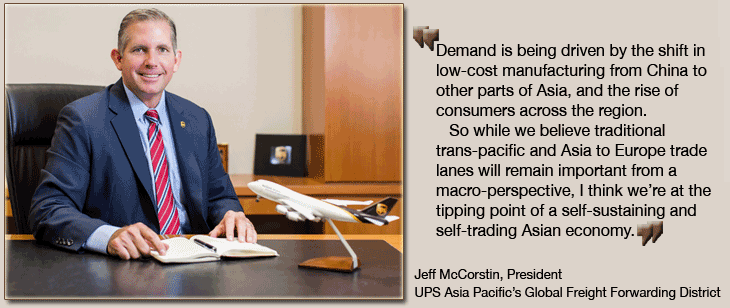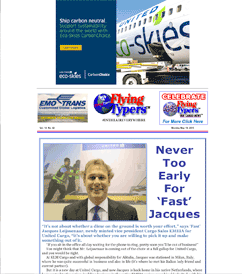 |
 |
 #INTHEAIREVERYWHERE |
| Vol. 14 No. 45 | Friday
May 29, 2015 |
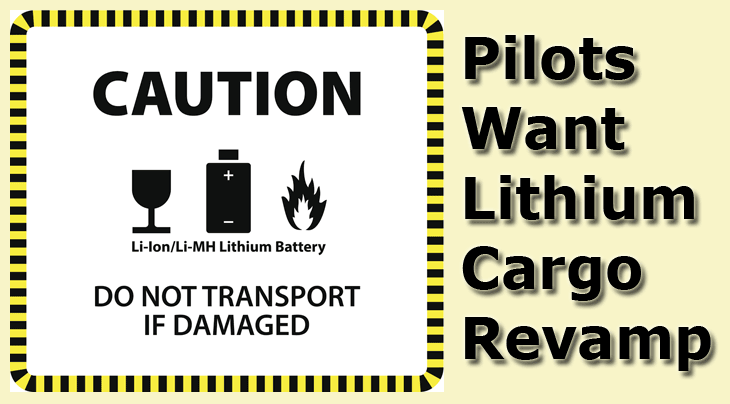 The
Working Group of the ICAO Dangerous Goods Panel (DGP) convened in Montreal,
Canada, from April 27th to May 1st, 2015. The
Working Group of the ICAO Dangerous Goods Panel (DGP) convened in Montreal,
Canada, from April 27th to May 1st, 2015.On the agenda were various working papers and recommendations due for implementation into the 2017-2018 version of ICAOs “Technical Instructions for the Safe Transport of Dangerous Goods by Air,” which is the internationally binding legal basis for the air transport of dangerous goods. At the heart of the action was a working paper submitted by the International Coordination Council for Aerospace Industry Association (ICCAIA), endorsed and supported by the International Federation of Air Line Pilots Associations (IFALPA) addressing the risks of transporting lithium ion batteries as cargo. Both ICCAIA and IFALPA feel that the transport of Lithium batteries, at least in large quantities, cannot be undertaken by aircraft in a safe manner because current technology with respect to aircraft fire-fighting capabilities and packaging technologies utilized for lithium batteries is insufficient; these suggestions were based on the tests undertaken by the FAA’s William J. Hughes Test Centre in 2013 and consolidated in their much discussed January 2014 report. Based on the safety risk model provided in the ICAO Safety Management Manual, ICCAIA and IFALPA “determine that immediate action to mitigate the unacceptable risks posed by lithium batteries was necessary.” On this basis, their joint recommendation brought forward by the working paper presented to the ICAO DGP was: a) That appropriate packaging and shipping requirements be established to more safely ship lithium ion batteries on passenger aircraft; b) That high density packages of lithium ion batteries and cells not be transported on passenger aircraft until safer methods of transport were established and followed; and c) That appropriate packaging and shipping requirements be established to more safely ship lithium metal and lithium ion batteries on freighter aircraft. A separate paper presented by IFALPA recommended extending the restrictions proposed for the carriage of “high density packages” of Lithium-Ion batteries to all-cargo aircraft. It was stated that “while lithium ion batteries were carried on both passenger and cargo aircraft, the majority of large shipments were transported on cargo aircraft. This, combined with the fact that cargo aircraft were not required to be outfitted with cargo compartments having an active fire suppression system makes the risk to cargo aircraft even greater than to passenger aircraft.” As the findings in ICCAIA’s paper were challenged by the PRBA and NEMA because of the serious ramifications any further restriction would have on the battery industry, the manufacturers, and distributors of electronic devices as well as consumers, ICCAIA pointed out that the likelihood of a cargo fire involving lithium batteries was classified “occasional” not solely on a lithium battery causing a fire; it was based on the potential for a lithium battery to be involved in a fire, e.g. the possibility that an otherwise controllable fire not involving lithium batteries turns catastrophic because of batteries present. Another point made was that any further restrictions to the transport of batteries might have the undesired effect that such commodities increasingly be shipped in an undeclared manner, whereas other DGP WP members “disagreed with the notion that a large number of people or organizations would break the law and continue to ship batteries if they were banned;” citing data from their States indicating that the percentage of deliberate noncompliance was low. The last argument backfired. It prompted the Secretary to remind the working group of the need for data, emphasizing that “the Air Navigation Commission and the Council had become increasingly concerned when arguments were made without data to substantiate them.” One part of the working group called for immediate action, being of the opinion that allowing unrestricted quantities of even compliant lithium batteries in cargo compartments while knowing that a fire could exceed the capabilities of the fire protection system was an unacceptable risk. It was emphasized that the goal was not to ban the transport of lithium batteries altogether on a permanent basis but rather to find a way to transport them safely. No decision on this topic could be reached, certainly to the disappointment of ICCAIA and IFALPA. While expressing general support, a considerable number of WP members cautioned that some terms used in the paper—notably “high density packages”—lacked a definition, the joint ICCAIA/IFALPA motion had not been identified as a formal proposal in accordance with DGP procedures, and there had been insufficient time to conduct necessary consultations. IFALPA and ICCAIA announced that a formal proposal meeting DGP procedures will be introduced at the 25th meeting of the ICAO DGP in Fall 2015, while a working group had been tasked by the Secretary with developing performance-based packaging standards for the safe transport of lithium batteries by air, involving the participation of the ICAO Flight Operations Panel and Airworthiness Panel. Another paper brought forward by PRBA proposing exempting small lithium metal button cells when installed in “life-saving medical devices” was rejected. Jens |
 |
|
 |
|
If
You Missed Any Of The Previous 3 Issues Of FlyingTypers |
|||
|
| Forward this email to a friend |
| Update Profile To continue receiving FlyingTypers |
Publisher-Geoffrey Arend
• Managing Editor-Flossie Arend • Associate Publisher/European Bureau
Chief-Ted Braun Film Editor-Ralph Arend • Special Assignments-Sabiha Arend, Emily Arend • Advertising Sales-Judy Miller |
|


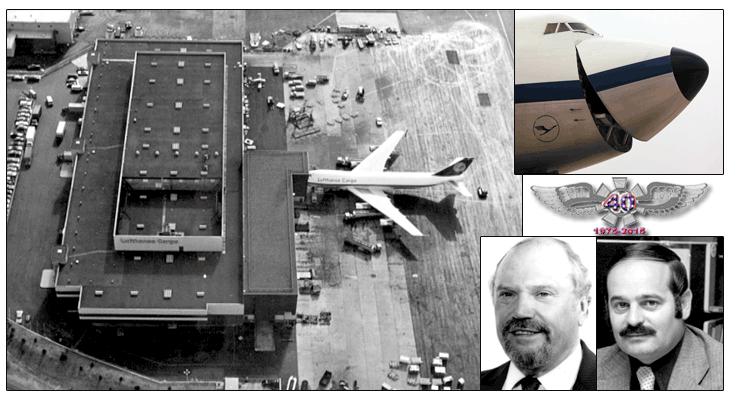

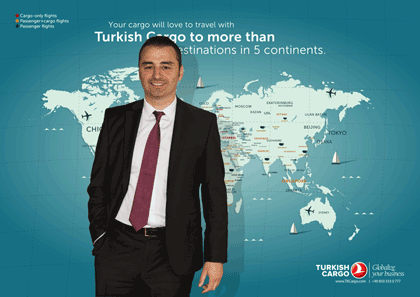 (New
Delhi Exclusive)—As Turkish Airlines
has grown over the past decade, Turkish Cargo—the rising star
of Europe, Africa, the Middle East, and the Americas (Miami service
launching October 25, 2015)—has performed a similar expansion
below decks and on a growing system of all-cargo services offered
by the flag carrier.
(New
Delhi Exclusive)—As Turkish Airlines
has grown over the past decade, Turkish Cargo—the rising star
of Europe, Africa, the Middle East, and the Americas (Miami service
launching October 25, 2015)—has performed a similar expansion
below decks and on a growing system of all-cargo services offered
by the flag carrier. 
